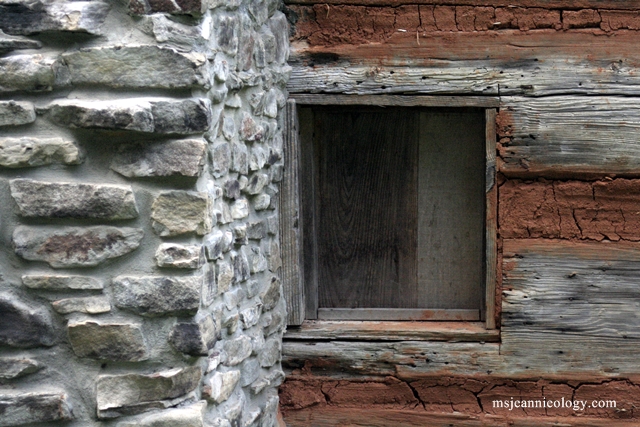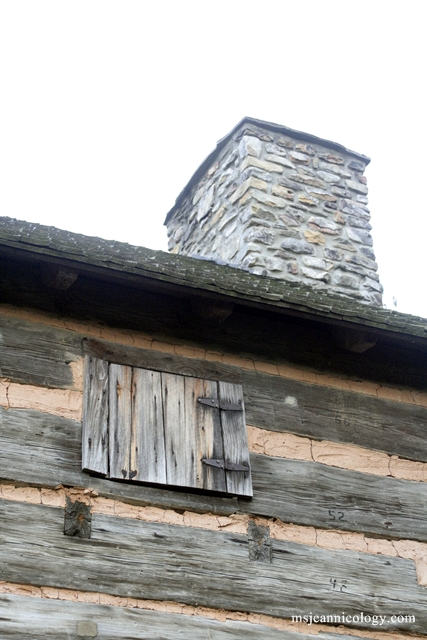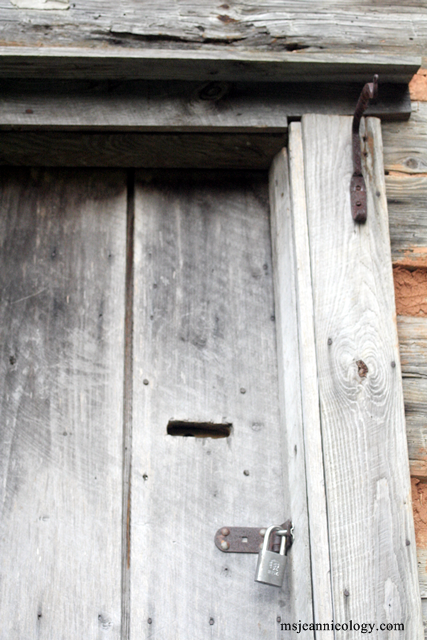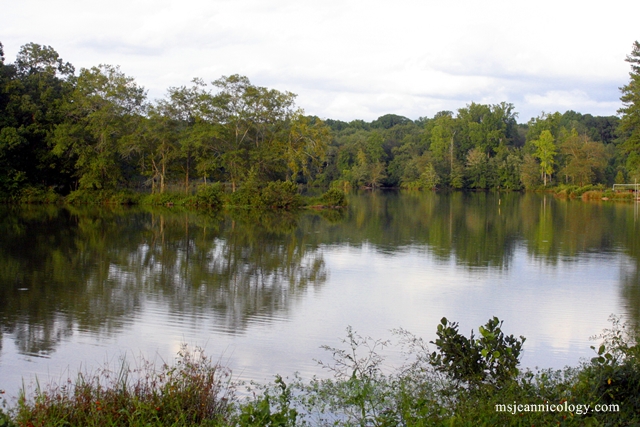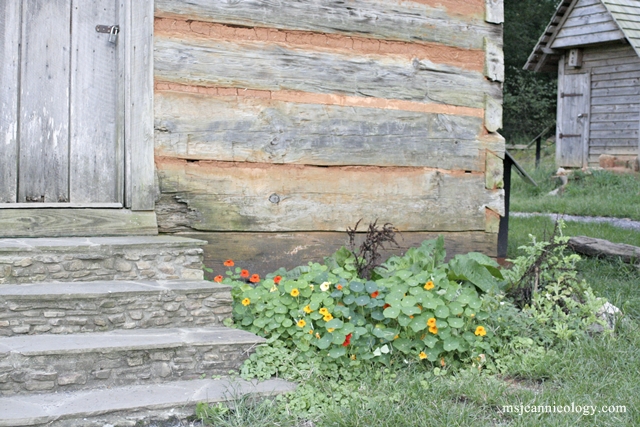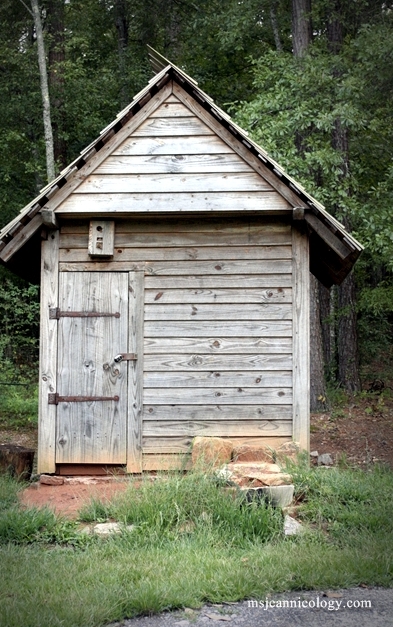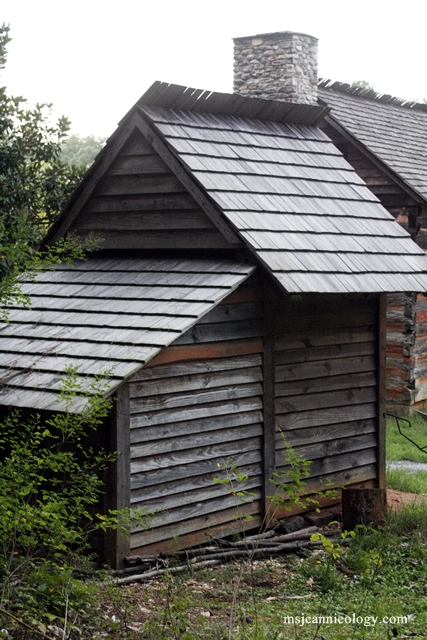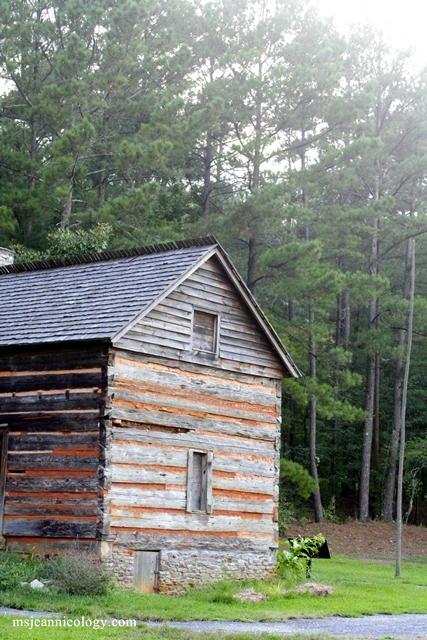The South has a way with architecture that is both storied and sentimental. From the massive columned plantation houses all the way down the line to the smallest cabins and cottages, there is penetrable emotion that can be felt in every crack in the plaster wall, every creak in the wide pine floor board and every cobweb rooming in a quiet corner.

Most people when they think of a distinct type of Southern architecture think of Scarlett O’Hara’s beloved Tara…
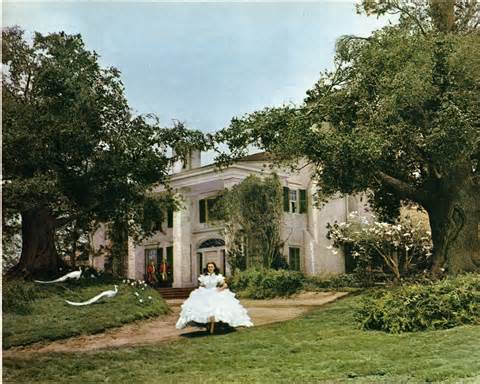
or Ashley Wilkes’ stately Twelve Oaks…
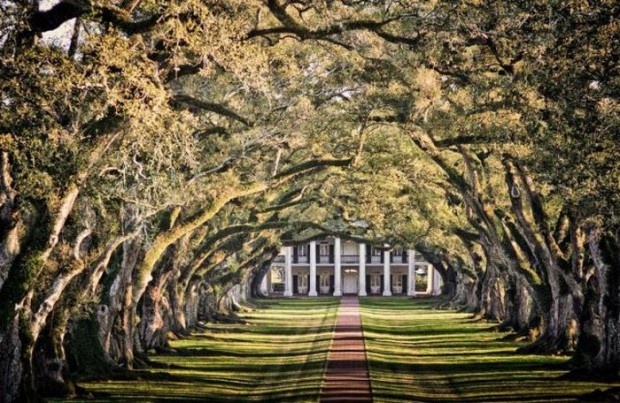
… big, white columned affairs that boasted the capacity to house a family of fifty and stretched dignified and elegant for miles and miles.
But when Ms. Jeannie first moved south she was surprised to learn that the first type of houses in Georgia were not these massive cotton boom-era wonders ( those didn’t come about until the mid-1800’s). Instead houses in the South started out much more humble with materials and design that seemed more suited to the cold, snowy climates of Maine or Vermont than the hot and humid sub-tropics of the deep South. This, dear readers, is what the first houses in Georgia looked like…
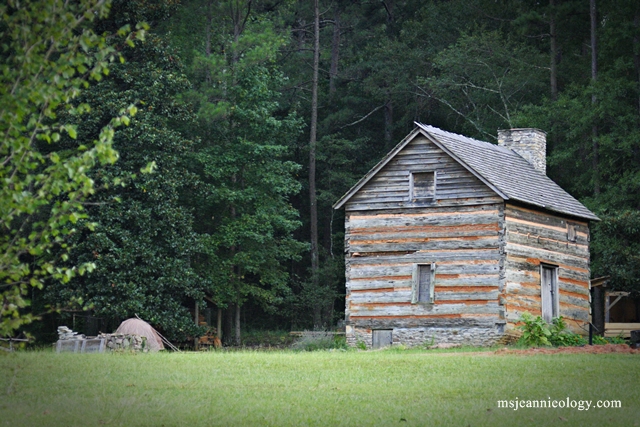
Descended from the landscapes of German and Scotch-Irish emigrants who made up the first gene pool in Georgia, log cabins and log blockhouses were erected out of familiarity of what was left behind in the old country. Made from local pine so prevalent in this part of the country, this type of housing also offered super strong protection from the elements, from wildlife and from raids by local Native American tribes.
It was plain. It was sensible. There were few conveniences and absolutely no frivolities inside – everything that belonged was basic and functional. Families were large, even in those small confines, and to say that quarters were close may be the just about the biggest understatement. Most often, log houses were made of just one room with a fireplace that would serve as heater and partial cookstove. Luxury meant two rooms in a straightforward room-over-room style. Imagine 14 family members of varying ages in just two small rooms. Could we survive such feats today?
These are interior photos of the blockhouse…

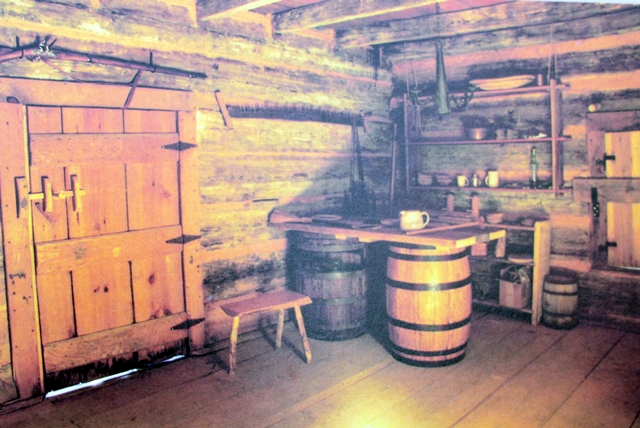
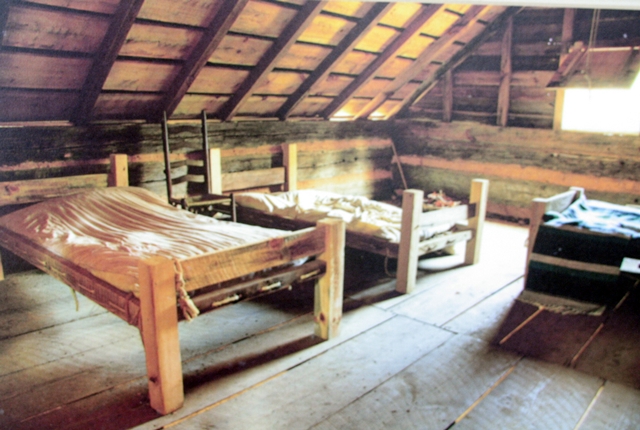
Windows were scarce and small, none bigger than 2′ feet x 2′ feet, which is stifling to think about in the hottest days of summer.
And firing holes were strategically placed throughout in case the home front needed defending…
But in the long run, it didn’t matter so much about all the cramped spacing and the lack of amenity, because hardly anyone stayed inside in the rural South in the late 1700’s. Life was lived outside…working, eating, cooking, caring for livestock and tending to gardens.
The block house that Ms. Jeannie visited sat directly across from a beautiful swampy lake, which made it seem like an ideal and promising setting for a pioneer spirit.
A fire pit, complete with roasting spit and log stools took full advantage of the view and Ms. Jeannie could hear the whisperings of centuries old stories in the trees as they swayed in the breeze.

The vegetable and flower gardens were kept close to the house…
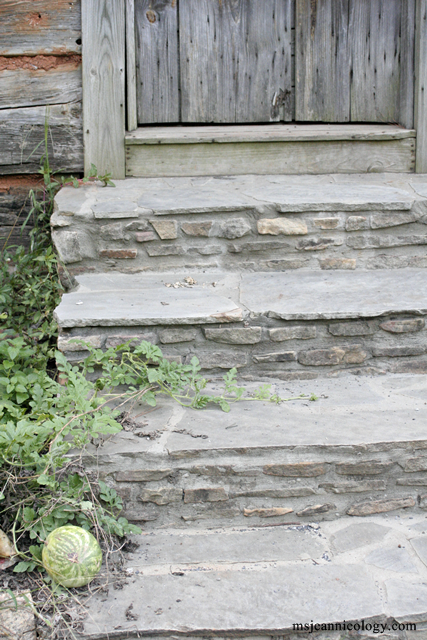
And a smoke house where meats like venison, wild boar, turkey and dove were cured sat just behind the cabin.
The surrounding natural woodlands provided fodder, food and fun as well as danger and disease.
Walking around this historic home-site Ms. Jeannie couldn’t help but get the sense that things happened here. The hands of hard work could be felt on her skin as she walked between the buildings and sat for a minute on the stumps at the fire pit. She could imagine babies being born, and chickens walking the grass, she could imagine weddings on the lawn and burials out back. She peered into the woods that surrounded the site and looked for eyes to peer back at her. She imagined the glow of the camp-fire at night and could hear the cicadas sing dreamers to sleep in the loft upstairs. She could also feel the fright of being exposed and vulnerable to a forest of darkness dangers – the shrill cry of the bobcat and the ruddy hiccup of the wild boar. And she could imagine how this lifestyle must have been thrilling, and scary, tiring and gratifying, heartbreaking and hard. In short she could imagine life as it is for almost every person – the highs and the lows, the joy and the pain. Not much has changed in that department in over 225 years.
Nurtured within the primitive confines of this simple log cabin, thoughts, ideas and off-spring grew up and grew out into a region that eventually redefined the very meaning of home and the purpose of house. With future generations, Southern dwellings would grow larger and more refined. They would become status symbols of wealth and industry, keepers of history and reminders of how the nation has changed both mentally, physically and emotionally over the course of 200 years.
And here it still stands, the lone little log cabin that has survived centuries and wars, dozens of families and thousands of visitors. Here it is the noble log cabin that started the South. Aren’t we lucky to be able to visit and learn from such a site?!

